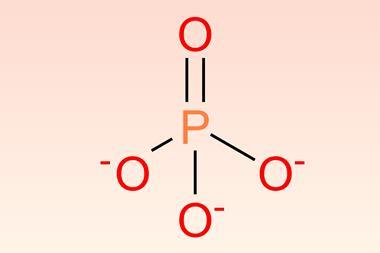Promising results for microbicide tenofovir after a string of failures
Early data from a clinical trial has rekindled hope of an effective topical gel to prevent HIV infection. Barrier and microbicide gels were originally sought to give women the ability to protect themselves against HIV without having to persuade their partner to use a condom. But development of the gels has been blighted by failure in human tests.
The new gel will enter the second stage of phase II trials this year, and is the first in a new generation of treatments to contain an ingredient specifically active against HIV. The active ingredient, tenofovir, developed by US pharmaceutical company Gilead Sciences, is a nucleotide that binds to a reverse transcriptase enzyme - via which the virus replicates within cells.
’It’s already available as a pill, and it’s a popularly prescribed antiretroviral,’ says Craig Hoseley from the University of Alabama at Birmingham, US, one of the centres at which the trial was carried out.
The development of microbicides against HIV was sparked by the discovery that a long-used spermicide gel called nonoxynol-9, still used in many brands of condom, destroyed the HIV virus in a test tube. But subsequent clinical studies found that rather than protect against infection, the gel made it worse. ’It caused local inflammation, which recruited HIV host cells [immune cells] to the area and exacerbated transmission of the virus,’ explains Hoseley.
Trial rethink
At the end of last year, the FDA went as far as adding a warning to the packaging of spermicides sold over the counter that contain nonoxynol-9, pointing out the increased the risk of HIV infection caused by the gel. The nonoxynol-9 horror story stimulated a rethink about the clinical study of anti-HIV gels. Researchers have since made the search for markers of inflammation an integral part of safety studies.
Even so, that move has not stopped the list of failures from growing. The latest phase III flop, Ushercell, had passed safety trials with flying colours. Trials of the cellulose sulfate gel compound developed by Canadian pharmaceutical firm Polydex were halted after women in one trial who were using Ushercell became infected at a higher rate that those not using it.
However, the new generation of gel treatments containing tenofovir has spurred fresh optimism. ’I truly believe we are turning a corner,’ says Sharon Hillier from the US-based Microbicide Trials Network (MTN) that organised the tenofovir trials.
Lisa Rossi, a spokesperson for MTN added that if the new generation of locally applied prophylactics are successful, other HIV drugs could find new uses in gel treatments.
’One new drug called maraviroc [developed by Pfizer] is very effective but the drug itself doesn’t absorb well - its effect is very localised,’ she says. ’This could make an ideal ingredient for a topical microbicide.’ Hoseley points out that the ’jury is still out’ on why Ushercell and other cellulose-based polymer compounds had failed to provide protection, and that they might still prove useful in the future. ’Only one of the Ushercell trials showed this slight increase in HIV transmission, and none of the data showed signs of inflammation - we’re still waiting for the data on why these gels didn’t work,’ he says. If this data shows that the gels are safe and well tolerated, they could provide useful carriers to make active ingredients into topical treatments.
Resistance concerns
Two more gels are currently being tested in phase III trials in Africa. Buffergel, made by US-based Reprotect maintains a slightly acidic and protective vaginal pH. And Pro2000 is a barrier gel that blocks initial infection.
But already, the high dose arm of the trial of Pro2000 trial has been halted by the organiser - the UK’s Medical Research Council (MRC) - after an interim analysis showed that the highest dose was unlikely to protect against HIV infection compared to placebo. But trials of both gels will continue and results are expected later this year.
Michael Lederman is director of the Center for AIDS Research at Case Western Reserve University in the US. His group’s lead molecule, PSC-RANTES has been developed specifically for local application. It blocks a receptor called CCR5 which HIV uses to gain access to immune cells.
Lederman points out that there are additional clinical complexities plaguing the microbicide field, particularly drug resistance.
’Tenofovir and other agents that share resistance patterns with tenofovir are already in use as therapeutics, so there is the risk that it may not work against viruses that already have key resistance mutations,’ he says. ’Also, if [these gels] are used by persons who are infected and do not know it, there is the possibility of inducing resistance mutations in that person, limiting future treatment options.’
Hillier admits that drug resistance is an issue. ’We build many layers of protective measures into our clinical trial, and people are not exposed to the gel if they are infected,’ she says. ’But we will have a long wait before these gels can be widely distributed.’
But Hoseley is optimistic, and thinks that an effective anti-HIV gel could be available within five years. ’Eventually, as we progress with these studies, we may find that it’s a combination of these treatments that’s required for an effective gel - many people in the field advocate that type of combination therapy especially to combat resistance,’ he says. ’But I’m excited about these new microbicides. And the best news we could hope for is that we have developed an effective gel already.’
Victoria Gill







No comments yet